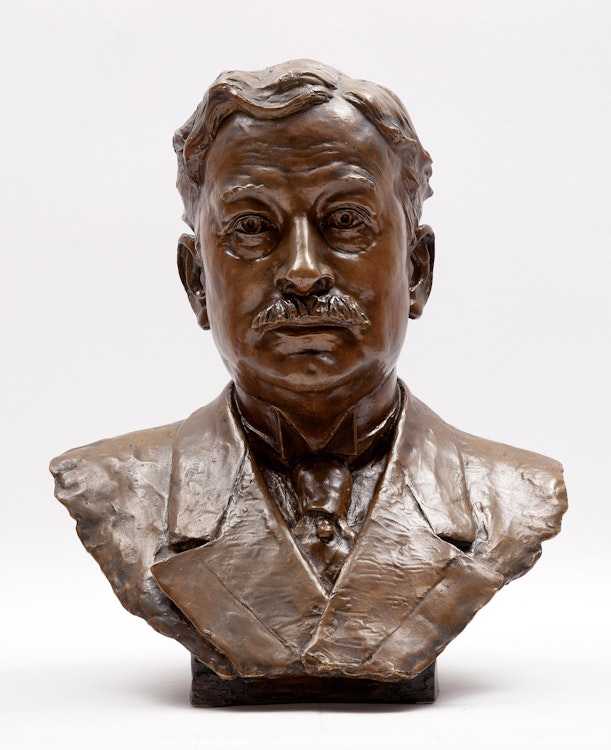Viscount Byng of Vimy by Henri Hébert

Henri Hébert
Viscount Byng of Vimy
bronze
signed (incised), dated 1928 and inscribed “Hohwiller Fondeau, Paris” on the base
17 x 14 x 11 ins ( 43.2 x 35.6 x 27.9 cms ) ( overall )
Auction Estimate: $2,000.00 - $3,000.00
Price Realized $2,640.00
Sale date: August 15th 2023
Private Collection, Montreal
Share this item with your friends
Henri Hébert
(1884 - 1950) RCA
Born in Montreal, Quebec, the son of noted sculptor Louis-Philippe Hébert he received his early education in France and returned to Canada with his parents when he was enrolled at the Monument National, Montreal. There he studied under Edmond Dyonnet in 1896. He returned to Paris in 1898 and studied at the Ecoles de la Ville de Paris and the Ecole des Arts Décoratifs. He returned to Montreal in 1902 and entered the classes of William Brymner for two years. He was back in France in 1904 for further study at the Ecole des Beaux Arts, then returned to Canada in 1909 and became an instructor at McGill University where he taught for over a decade.
Hébert decorated Moyse Hall, McGill University, Montreal with bas-reliefs. In 1920 he completed the statue of Evangeline (originally designed by his father) and it was unveiled at Grand Pré. In 1928 he co-founded the Sculptor’s Society of Canada with Frances Loring and Emanuel Hahn. Hébert created numerous sculptures for memorials, portrait busts and many decorative works for private and public buildings.
Lenore T. Crawford of the London ‘Morning Free Press’ noted the following, “In pre-war Canada he found inspiration for rather ‘pretty’ sculpture, abetted by a natural predilection for the decorative side. But 1914 brought other inspiration and the sensitive young artist was deeply affected. He turned to fierce subjects, adopted a new technique which remained when the war was over. The resultant strength combined with Hébert’s natural gentleness to create sculpture of grace and charm devoid of prettiness. Perhaps the finest example is the monument to the dead of Outremont, a woman representing the city, with head bowed in grief yet body marching with the flag.”
Henri died in Montreal at the age of 66. He was a member of the Royal Canadian Academy (A.R.C.A. 1912) (R.C.A. 1922), Fellow of the Royal Society of Arts (F.R.S.A. 1939); Doctor “Honoris Causa”, University of Montreal (1940). He is represented in the Art Gallery of Ontario; Quebec House, Westerham, Kent, England and elsewhere.
Source: "A Dictionary of Canadian Artists, Volume II”, compiled by Colin S. MacDonald, Canadian Paperbacks Publishing Ltd, Ottawa, 1979

